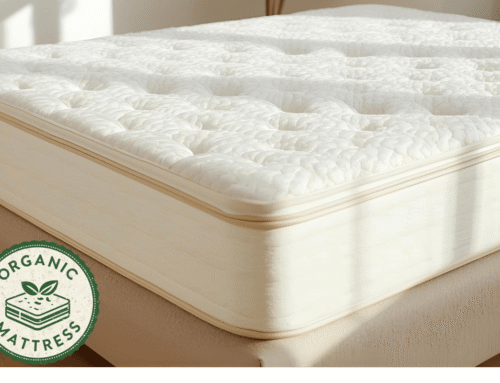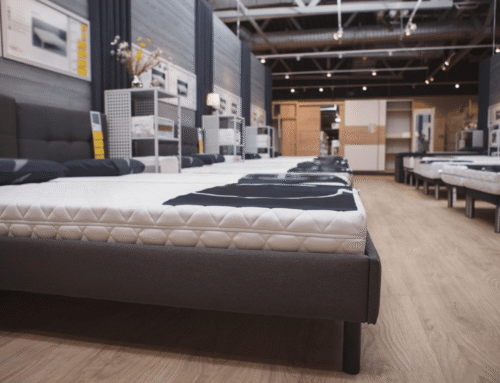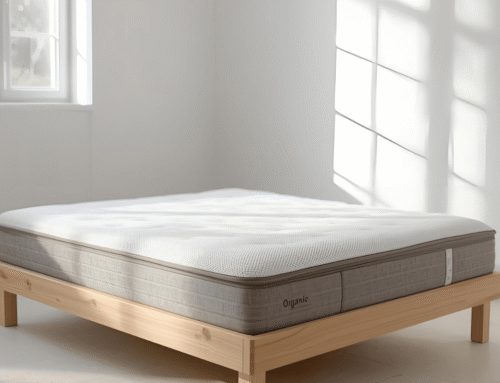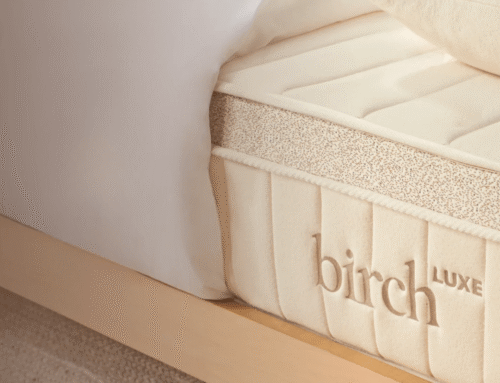Have you ever stopped to think about what’s actually under you while you sleep? It’s not just the mattress, it’s the whole setup that decides how your body feels in the morning. You start to notice how much the frame, foundation, and even the slats affect support and pressure relief once you’ve tried different beds.
You might have the softest mattress, but if the base sags or shifts, your back still takes the hit. A weak foundation throws off your alignment, so it doesn’t take long before you wake up sore or restless. You probably wouldn’t expect something under the mattress to cause that much trouble, but it does.
Let’s explore what makes up your bed and how each part contributes to your sleep. It’s not just about the mattress, but everything from the frame to the foundation plays a role in how well you rest. Once you experience different setups, you’ll notice how much the frame, foundation, and even the slats affect your comfort and support.
Key Takeaways
- Your mattress isn’t just one piece; it has layers. The top comfort layer cushions you, while the support core keeps your spine aligned.
- A solid bed base, like a platform bed, provides firm support and can extend your mattress’s life.
- Box springs add height and absorb shock, especially beneficial for spring mattresses, enhancing overall comfort.
- Adjustable bases let you raise your head or legs, providing personalized comfort and relief from pressure points.
- The right foundation ensures your mattress performs well, promoting better sleep and reducing aches.
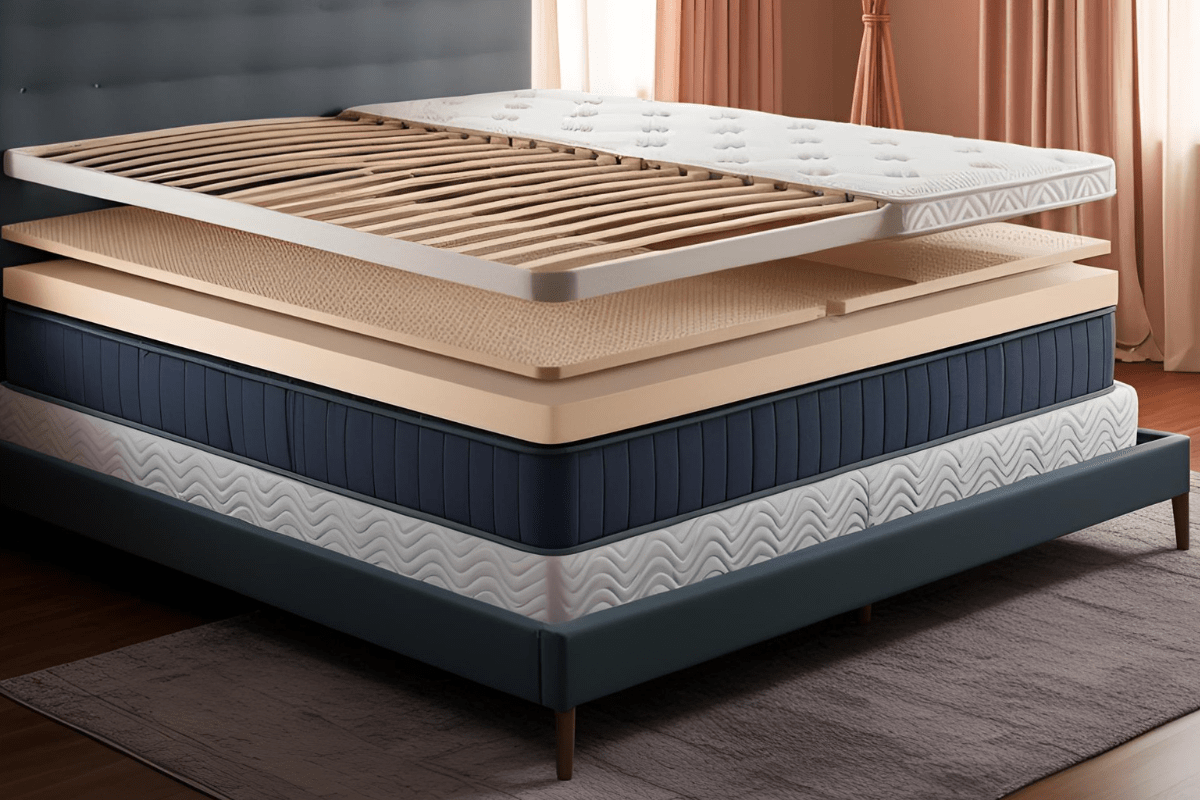
Mattress Layers: The Comfort Zone
The mattress is more than just a surface you sleep on. It’s made up of layers that work together to create a better sleep experience. The top layer, the comfort layer, is what you feel first. It’s soft and cushioning, designed to reduce pressure on your shoulders, hips, and back so you can sleep more soundly.
Under that, the support core keeps your spine aligned. It stops you from sinking in too much, which can leave you waking up sore. This layer provides balance between comfort and structure to ensure you don’t end up with aches and pains.
Some mattresses add a transition layer between the comfort and support layers. This layer blends the two, so you won’t feel like you’re sinking too deep or sleeping on something too firm. It creates a smoother, more consistent feel for overall experience.
Bed Base: The Foundation Of Sleep
The bed base is important in supporting your mattress, as it ensures the mattress has a stable and even surface. A solid base not only raises your bed’s height but also keeps the mattress in top condition, promoting better sleep over time. Without a sturdy foundation, your mattress may wear out quicker.
Platform beds offer a flat, firm surface, a solid choice for those who prefer simplicity. They don’t require a box spring, so you can skip the extra layer. This type of base is great for anyone looking to keep things low-maintenance.
Box springs, on the other hand, come with coils or metal rods that provide shock absorption. They are great at enhancing comfort, especially for spring mattresses. Adjustable bases, meanwhile, let you tweak the position of your head or legs, which can be a huge plus if you enjoy personalized comfort or need relief from pressure points.
Box Spring: Do You Need One?
A box spring is a traditional bed foundation that many still swear by. It gives your mattress extra height, which can be handy for some people who prefer a bit more lift off the ground. The added bounce can give your bed a more familiar feel, especially if you’ve always used spring mattresses.
Foam and hybrid mattresses are now much more popular, and they don’t rely on a box spring. These types of mattresses usually perform just fine on slatted or solid platforms, making box springs less of a necessity. In fact, they could even be overkill if you’re using a modern mattress that doesn’t need the extra support.
There’s something comforting about the height and structure a box spring provides, especially with older metal bed frames. If you’re into the classic feel or need extra elevation for your bed, it might still be worth considering. Ultimately, it all depends on what feels best for you and your mattress.
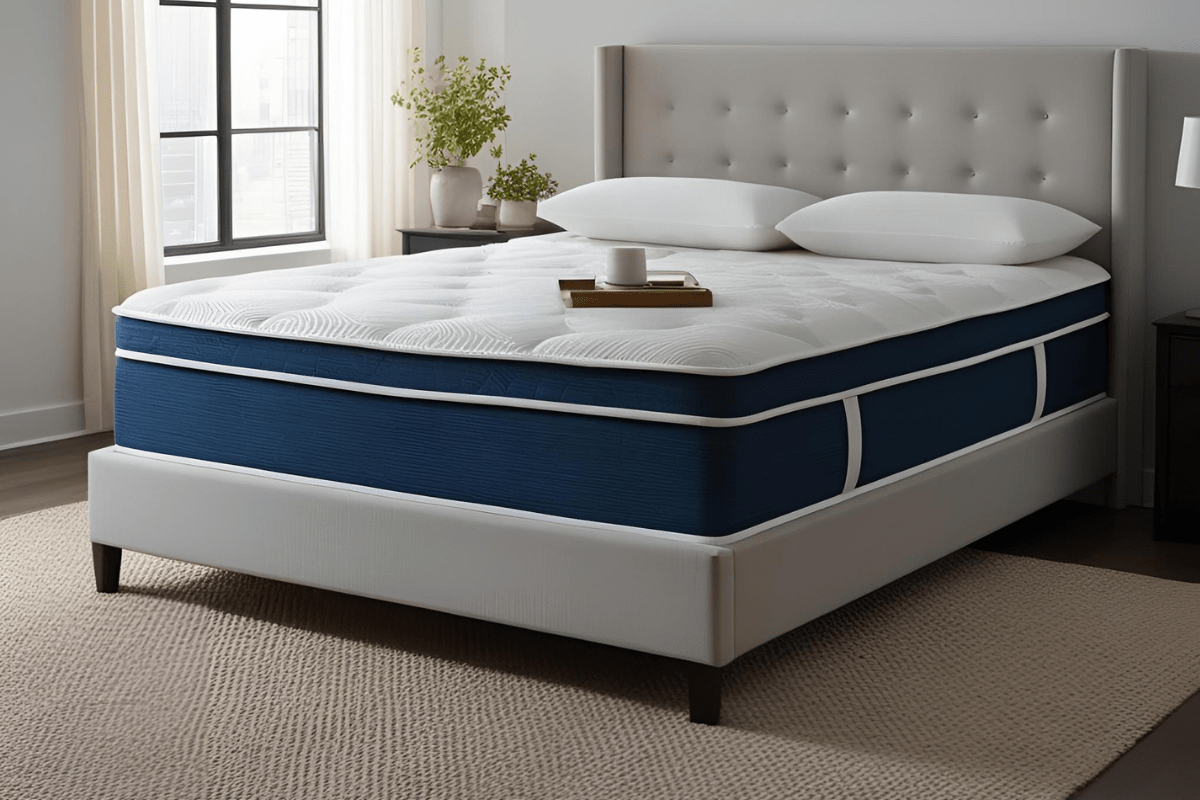
Bed Frame: The Supporting Cast
The bed frame plays a bigger role than just holding everything in place. It supports the foundation and keeps your mattress from sagging over time. It can also enhance your bedroom, blending function with style. Without a solid frame, your bed might feel uneven, and the mattress could shift around more than you’d want.
The headboard is a nice feature, especially if you enjoy a bit of back support while sitting up. While some people like it purely for its look, it can definitely make sitting up in bed a little more comfortable. It’s one of those simple touches that can make the room feel more complete.
Then there’s the footboard, which isn’t a must-have but can still be useful. It helps keep your mattress in place, so you don’t have to worry about it shifting out of position. And of course, the slats and rails are essential, holding the mattress and base securely in place for long-term comfort.
Slats: Hidden But Important
Slats are often overlooked, but they are crucial in supporting your mattress. They’re the foundation beneath, which provides steady support to everything above. Whether wood or metal, their quality and spacing matter more than you might think.
If the slats are too far apart, your mattress might not have the proper support, which can lead to sagging over time. For foam mattresses, especially, slats that are closer together keep things sturdy and help prevent any uneven wear. This also ensures that the mattress stays in top shape for longer. Good slats also help with airflow, which is something a lot of people don’t realize.
Proper ventilation can keep your mattress fresher for longer by reducing moisture buildup, which is crucial for hygiene. So, even though slats are out of sight, they’re definitely worth paying attention to for the long-term comfort and durability of your bed.
Still, even with solid support, mattresses won’t last forever, so it’s important to understand what are the signs you need a new mattress and how often you should replace your mattress.

Support System: Holding It All Together
A strong support system is key to ensuring your mattress holds up over time. The frame, slats, and base all play a crucial role in keeping everything steady. Without solid support, your mattress can start to lose its shape and comfort.
A weak foundation leads to discomfort, especially in the back. Over time, it can cause your mattress to sag, which not only makes it harder to sleep but can also void warranties. You want to feel confident in your mattress for years to come, and that starts with a sturdy base.
A good foundation supports the natural alignment of your body and helps you get a restful night’s sleep. Investing in the right support system helps your mattress perform as it should. Without it, even the best mattress can’t deliver the comfort and longevity you expect.
Headboard: More Than Just Looks
A headboard does more than just add style to your bed. It provides extra support, especially if you enjoy sitting up to read or watch TV. With a sturdy one, you’ll feel more comfortable and maintain a better posture while you’re relaxing. Some headboards are padded for a soft touch, offering a cushioned surface that can make sitting up feel even cozier. Others are made of wood or metal, giving your bedroom that timeless, clean look. No matter the material, it’s all about enhancing the vibe of your space.
Nobody likes when their pillows keep slipping off the bed. A solid headboard can stop that from happening, keeping everything in place and adding a bit more convenience to your daily routine. It’s these little touches that make your space feel more complete.
Footboard: Optional But Stylish
A footboard can add a nice touch to your bed frame, as it gives it a more polished and cohesive look. For some, it feels like the bed is missing something without one. It’s also practical since it can help keep blankets and sheets from sliding off during the night. On the other hand, some prefer to skip the footboard for a more open feel. Without it, the bed often looks less cluttered and gives the room a more minimalist vibe. It can also make the space feel larger, especially in smaller rooms.
In the end, whether or not to add a footboard is about personal style. It’s a simple way to bring a bit of personality to the bedroom, but it’s not essential for everyone. The choice depends on what feels best for you and your space.

Mattress Toppers and Protectors
Mattress toppers and protectors are also important in creating a comfortable sleep environment. A topper can adjust the feel of your mattress, whether you want a softer or firmer surface. It gives you the flexibility to personalize your bed without investing in a whole new mattress. Protectors, on the other hand, help maintain your mattress’s longevity. They act as a barrier against spills, dust, and general wear, so you don’t have to worry about accidents affecting your bed. This simple addition can really extend the life of your mattress.
Adding both to your setup can improve comfort and keep your mattress in better shape for longer. They’re easy ways to adjust the feel of your bed, so you’re not stuck with something uncomfortable. They also save you from the cost of upgrading to a new mattress too soon.
If you’re thinking about upgrading or replacing your mattress, it’s important to consider how to choose a mattress, when is the best time to buy it, and how much you should spend on it. These factors can help guide your decision to find the right mattress for your needs.
Final Thoughts
You’ve probably been there—tossing and turning, trying to find that perfect sleeping position. Understanding bed anatomy helps you choose a bed that supports your body and fits your needs. When you know how each part works, it’s easier to choose a bed that truly supports your body and fits your needs.
Think about how a solid foundation affects comfort. It’s not just about the mattress, but also pay attention to the slats, base, and even the headboard. These components help keep everything stable and aligned, so you wake up feeling more rested. The right support matters just as much as the mattress itself.
It also helps to understand who invented the mattress, what mattresses are made of, whether they are made in the USA, and what the common mattress materials are.
A bed that lasts is worth the investment. Understanding the anatomy of your bed lets you make smarter choices and enjoy better sleep. So, the next time you update your setup, keep the bigger picture in mind. A little extra thought can go a long way in improving your sleep quality.

